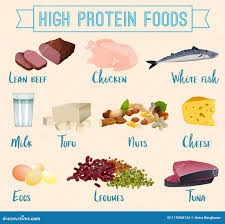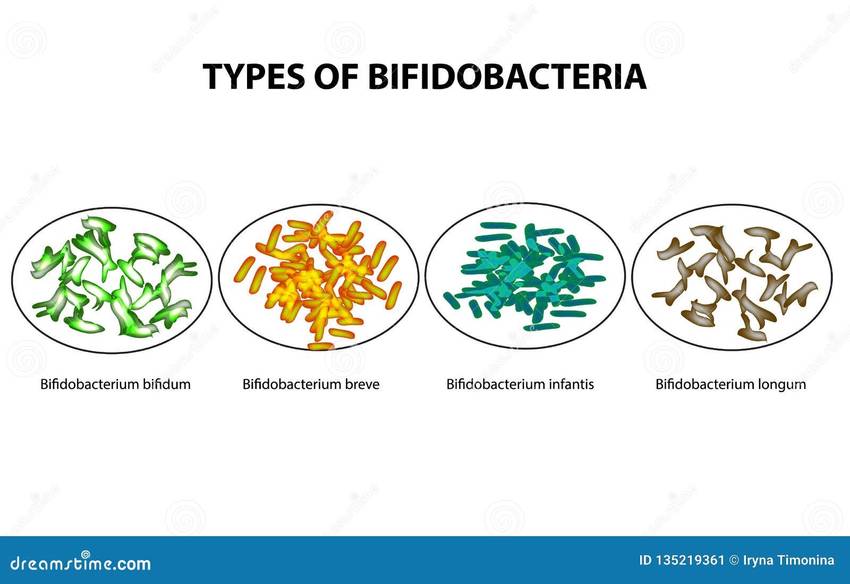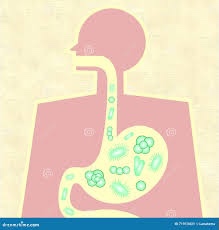Gut friendly veggies for the fall season
Is high Protein intake good or bad for the gut?
 paid license from dreamstime.
paid license from dreamstime.
 Located in Seattle area’s tech corridor of Redmond Washington, MZinger Vending offers protein- focused health drinks and snacks.
Located in Seattle area’s tech corridor of Redmond Washington, MZinger Vending offers protein- focused health drinks and snacks.
But is it good for you? As so often is the case, it is ok in moderation. However, consuming excessive amounts of undigested proteins will encourage pathogens and protein-fermenting bacteria, increasing the risk of diseases, according to the National Institute of Health (1). Excessive intake of protein can affect the gut barrier and the immune system. Proteolytic fermentation generates toxic metabolites, which can lead to diseases.
Conversely, studies by Science Direct claim that the composition and activity of gut microbiota are profoundly dependent on the dietary intake of carbohydrates and proteins.
Dietary fiber intake generates the production of short-chain fatty acids (SCFAs), suppressing proteolytic activity.
The microbial members of the gut utilize and compete for dietary and endogenous (non-dietary) proteins, which are used for energy production and biosynthesis (2).
1. https://pubmed.ncbi.nlm.nih.gov/28215168/#:~:text=Supplying%20high%20and%20undigested%20proteins,regulating%20the%20secretion%20of%20metabolites.
2. https://www.sciencedirect.com/science/article/abs/pii/S0268005X21003271
Exercise changes our gut Microbiome
Exercise, can modify gut microbiota by its positive impact on energy homeostasis where the cells in our body regulate energy and food intake.
Denise Alvey, RDN, a registered dietitian with UCLA Health Sports Performance powered by Exos, said that “exercise allows for more oxygen to reach the brain and bloodstream,” which is a healthy environment for good bacteria to flourish. Alley adds that good exercise and a healthy diet complement each other in ways the allow our gut flora to flourish.
https://www.uclahealth.org/news/new-microbiome-research-reveals-exercise-may-impact-gut
人間は微生物叢にとっては「サンゴk礁」ですあることは病気を予防する多様性の鍵となる; Humans are “coral reefs” for microbiota; diversity key to disease prevention
このアイデアは、エル・パイス誌(2)の2023年2月26日号で有名な微生物学者フレデリック・ブッシュマンによって名付けられました。あるいは、微生物学者のイグナシオ・ロペス=ゴニが言うように、「私たちはゲノムの 1% が両親から、99% が微生物(1)から受け継がれた超生物です」
研究者や健康専門家は、人間の「サンゴ礁」の中に今日の健康上の問題の多くの原因があり、今日の非常に多くの解決策の源があると確信しています。
腸内微生物のほとんどの菌株は有益で健康的ですが、他の菌株は有害であるあることが特定されています。イェール大学の研究者達による最近の研究では、モルガネラ・モルガニイと大腸菌が人間のDNAに対して有毒な分子を生成し、ネズミの研究でも腫瘍を引き起こすことが判明した。胃内でよく見付かる別の細菌であるヘリコバクター・ピロリは、胃がんのリスク増加(3)と関連しています。
一方では、「ほとんどすべての病気の共通要因は[微生物叢の]多様性の喪失であり、これはおそらく、野菜をほとんど含まないタンパク質と脂肪の豊富な食事にも関連していると考えられます」。エル・パイス誌(1)2023年1月2日号に引用されている、国際ヒューマンマイクロバイオームコンソーシアム科学委員会メンバーである消化器科医フランシスコ・ガーナーによると、野菜を消化するために結腸内に存在していた微生物叢は失われるし、消滅する。
国立衛生研究所のPubMedは、複数世代にわたり、低繊維、低MAC(微生物叢がアクセス可能な炭水化物)食生活は多様性の進行性の喪失をもたらし、MAC食生活を再導入しても、それを元に戻すことはできません。食物繊維に含まれるMACは、この微生物生態系の形成に重要な役割を果たしており、伝統的な食生活と比較して西洋の食生活では著しく減少しています。(5)
東京の医薬基盤研究所の黒谷佳代氏は、高繊維納豆は大豆を枯草菌で発酵させて作られ、味噌は大豆を麹菌で発酵させて作られることを発見した。93,000人の日本人と彼らの食習慣を対象とした同氏の研究では、納豆を最も多く食べる男性はほとんど食べない男性に比べて死亡率が24%低く、女性は心血管疾患による死亡リスクが21%低いことが示された。(3)
1) https://english.elpais.com/science-tech/2023-01-03/we-are-half-human-half-bacteria-what-the-microbes-in-our-bodies-can-do-for-us.html
2) https://english.elpais.com/science-tech/2023-02-26/study-reveals-exchange-of-microbiome-bacteria-could-increase-risk-of-disease.html?outputType=amp
3) https://www.reuters.com/article/us-health-diet-soy/miso-soup-might-be-one-comfort-food-that-helps-you-live-longer-idUSKBN2012J6
4) https://english.elpais.com/science-tech/2022-10-31/gut-dwelling-bacterium-singled-out-as-the-possible-cause-of-colorectal-cancer.html
5) https://www.ncbi.nlm.nih.gov/pmc/articles/PMC4850918/
その他の関連記事: https://www.cnbc.com/2023/03/02/nutritionist-from-japan-shares-foods-she-eats-every-day-to-stay-healthy-young-and-live-longer.html
The statement has been tossed around that people have more bacterial DNA than human DNA. However you slice it, whether by bacteria cells (38 trillion) versus human cells (30 trillion) (2) or bacteria genes (30 million) versus human genes (23,000) (1), the results points toward the human body as an ecosystem of gut microbes, like a “coral reef”.
This idea is dubbed by famous microbiologist Frederick Bushman in a February 26 2023 issue of El Pais (2). Or as microbiologist Ignacio López-Goñi puts it, “We are superorganisms in which 1% of our genome is inherited from our parents and 99% from our microbes (1).”
Researchers and health experts are convinced that inside the human “coral reef“ are causes of so many of today’s health problems, and source of so many of today’s solutions.
While most strains of gut microbes are helpful and healthy, others have been identified as harmful. A recent study by researchers at Yale University found that Morganella morganii and Escherichia coli produce molecules that are toxic to human DNA, also causing tumors in a mice study. Another common bacterium in the stomach, Helicobacter pylori, is associated with an increased risk of gastric cancer (3).
On the other hand, “The common factor…in almost all diseases is the loss of diversity [in the microbiota], which is possibly also related to protein- and fat-rich diets [that include] few vegetables. The microbiota that we had in the colon to digest those vegetables is lost and disappears,” according to gastroenterologist Francisco Guarner, a member of the International Human Microbiome Consortium’s scientific committee who is quoted in the January 2 2023 issue of El Pais (1).
The National Institute of Health’s PubMed reported that over multiple generations, a low-fiber, low-MAC (Microbiota accessible carbohydrates) diet results in a progressive loss of diversity, which is not recoverable upon the reintroduction of dietary MACs. MACs found in dietary fiber, play a key role in shaping this microbial ecosystem, and are strikingly reduced in the Western diet relative to more traditional diets (5).
Kayo Kurotani of the National Institutes of Biomedical Innovation in Tokyo, found that high fiber Natto is made from soybeans fermented with Bacillus subtilis, and miso is soybeans fermented with Aspergillus oryzae. His study of 93,000 Japanese and their eating habits showed that men who ate the most natto were 24% less likely than those who rarely ate, and women were a 21% lower risk of dying from cardiovascular causes (3).
1) https://english.elpais.com/science-tech/2023-01-03/we-are-half-human-half-bacteria-what-the-microbes-in-our-bodies-can-do-for-us.html
2) https://english.elpais.com/science-tech/2023-02-26/study-reveals-exchange-of-microbiome-bacteria-could-increase-risk-of-disease.html?outputType=amp
3) https://www.reuters.com/article/us-health-diet-soy/miso-soup-might-be-one-comfort-food-that-helps-you-live-longer-idUSKBN2012J6
4) https://english.elpais.com/science-tech/2022-10-31/gut-dwelling-bacterium-singled-out-as-the-possible-cause-of-colorectal-cancer.html
5) https://www.ncbi.nlm.nih.gov/pmc/articles/PMC4850918/
Other related articles: https://www.cnbc.com/2023/03/02/nutritionist-from-japan-shares-foods-she-eats-every-day-to-stay-healthy-young-and-live-longer.html
Gut health benefits of Brazilian fruits
Plant-based diets, rich in antioxidants and anti-inflammatory compounds, are key to prevention non-communicable chronic diseases (NCD), says the Multidisciplinary Digital Publishing Institute (MDPI) in a September 19, 2023 issue (1).
NCDs like cardiovascular diseases, obesity, diabetes, and cancer stem from genetic, environmental, and behavioral factors and are aggravated by high-sugar, high-fat diets (3).
Brazilian native fruits, originating from diverse biomes, are rich in bioactive compounds, and their processing not only allows for fresh consumption, but also yields by-products rich in valuable elements like phenolics, providing substantial health benefits. According to the National Institute of Health, phenolics in plants can defend against ultraviolet radiation, pathogens and parasites (2). Brazilian native fruits include acerola, açaí, baru, buriti, guava, jabuticaba, and juçara. Cerrado plants present in the Brazilian forests, contain phenolic compounds which offer anti-inflammatory and antimicrobial actions (4).
The MDPI review discusses the findings of in-vitro studies, pre-clinical studies and clinical trials on the effects of Brazilian native fruits, their by-products, as well as their bioactive compounds on human intestinal microbiota and NCD showing the science behind these claims (1).
1. https://www.mdpi.com/2304-8158/12/18/3491
4. https://www.ncbi.nlm.nih.gov/pmc/articles/PMC4632725/
TCM’s Astragalus plant keys longevity & cancer prevention
The astragalus plant (Astragalus membranaceus) has been used in Traditional Chinese Medicine (TCM) for thousands of years. It was often combined with other herbs to strengthen the body against disease. Astragaus is an adaptogen that defends our body from physical, mental, or emotional stress (1).
Astragalus is important in the aging process, and research suggests, has positive effects on tumors and cancer, according to Pubmed Central (4) and Oxford University Press.
Astragalus helps prevent tumor growth and protects against cell damage. Astragalus achieves this by reducing the aging of telomeres. Telomeres are structural “protective ends” of DNA. Telomere attrition during successive cell divisions induces chromosomal instability, and can lead to cancer. Cancer is generally an age-related genetic disease, manifesting only when normal cells accumulate genomic instability over a period of time, according to Biomed Central (3).
One study of 29 human colon cancer cells and tumor xenograft was undertaken by Quality Assurance Laboratory of the School of Chinese Medicine and Hong Kong Baptist University (6). The results showed that Astragalus saponins (AST) inhibit cell proliferation in part by inhibiting cyclin-dependent kinase activity, according to the research published by Oxford University Press (6).
Other sources say that Telomeres are a ribonucleoprotein complex responsible for progressive synthesis of telomeric DNA repeats (TTAGGG) (3). Telomerase counteracts the telomere shrinking process that delays, even reverses the cellular aging process (4) (5).
1. https://www.medicalnewstoday.com/articles/astragalus-benefits
2. https://www.sciencedirect.com/topics/medicine-and-dentistry/astragalus
3. https://genomemedicine.biomedcentral.com/articles/10.1186/s13073-016-0324-x
4. https://pubmed.ncbi.nlm.nih.gov/21417995/#:~:text=Telomerase%20is%20the%20enzyme%20responsible,and%20stem%20and%20tumor%20cells
5. https://en.m.wikipedia.org/wiki/Telomerase
6. https://academic.oup.com/carcin/article/28/6/1347/2476243#
study of Japanese gut microbiome reflects unique dietary habits; 独特の食習慣を反映している日本人の腸内微生物叢の研究
日本人は⻄洋人と比べて独特の食文化と習慣を持っており、赤身の肉よりも魚介類を食 べることに強調しています。研究者は、彼らの腸内微生物叢には、水生植物由来の多糖 類を分解する酵素の遺伝子がアメリカ人よりも多く存在していることを発見した。国立 衛生研究所、パブメド・セントラルの報告書によると、日本人は平均寿命が最も⻑く、 体格指数(BMI)が非常に低い。
この研究では、NGS (次世代シーケンス) を使用した糞便 DNA サンプルのシーケンスに より、日本人 106 人の腸内微生物叢からメタゲノム データを収集および分析されまし た。そして、日本を含む 12 カ国から選ばれた合計 861 人の健康な個人からの腸内微生 物叢のデータを使用し、JPGM(日本の腸内微生物叢)のユニークな微生物および機能 的特徴をさらに調査されました。
細菌門の存在量を比較すると、JPGM は放線菌の存在量が最も多いことを示しました。 放線菌は、抗生物質、抗真菌物質、および抗がん剤の特質を持つ二次代謝産物を生成し ます。
対照的に、JPGM におけるバクテロイデテス属とプロテオ細菌の存在量は他のさまざま な国の微生物叢よりも非常に低かった。それは代謝障害や炎症性腸疾患が関与されてい ると考えられています。
属レベルでは、JPGM はビフィズス菌、ブラウティア、コリンセラ、連鎖球菌、および 未分類のクロストリジウム属が最も豊富に含まれていることを特徴としていましたが、 クロストリジウム、アリスティペス、未分類のファーミクテス、ダイアリスター、ブチ リビブリオの存在量は 12 か国の中で最も少ない。
Japanese (JP) have unique dietary culture and habits compared with Western people, with an emphasis on consuming seafood over red meat. Researchers connect the dots that their gut microbiomes have more genes for aquatic plant-derived polysaccharide-degrading enzymes than those of Americans, for example. Japanese exhibit the highest average life span and very low body mass index (BMI), according to a report by Pubmed Central, National Institute of Health.
The study collected and analysed the metagenomic data from gut microbiomes of 106 Japanese individuals by sequencing of fecal DNA samples using NGS (next generation sequencing), and further explored the unique microbial and functional features of the JPGM (Japanese gut microbiome) using microbiome data from a total of 861 healthy individuals selected from 12 countries, including Japan.
When comparing the abundance of the bacterial phyla, the JPGM showed the highest abundance of Actinobacteria. Actinobacteria produce secondary metabolites that have antibiotic, antifungal, and anticancer qualities (2). In contrast, the abundance of Bacteroidetes and Proteobacteria in the JPGM was significantly lower than in the microbiomes of various other countries, which are believed to involve metabolic disorders and inflammatory bowel disease (3).
At the genus level, the JPGM was characterized by the highest abundance of Bidfidobacterium, Blautia, Collinsella, Streptococcus, and unclassified Clostridiales, but the lowest abundance of Clostridium, Alistipes, unclassified Firmicutes, Dialister, and Butyrivibrio among the 12 countries.
1. https://www.ncbi.nlm.nih.gov/pmc/articles/PMC4833420/
Fecal microbiome inadequately represents gut microbiome
For one, stool consistency varies over time. In addition, both gut microbiome composition and phenotypes or diseases of interest help define the nature of one’s health. Researchers then found a significant compositional difference of gut microbiome by specific location along the GI tract. All this calls for greater accuracy than exclusively using stool samples as a means for determining gut health and gut research.
https://www.hindawi.com/journals/cmi/2023/6868417/
Links in relationships also link gut bacteria
We begin with proximity. Proximity to peers plays a role in the microbial content of our gut. Gut microbiome links in family relationships begin at early childhood when the mother’s microbiome influences the gut microbiota of the baby, and continues throughout life, according to an August 09 2023 article in Psychology Today.
People who live with us or are relatively close to us impact the shape of our gut, skin, and oral microbiomes, say the Psychology Today article. This includes family members, friends, and neighbors (1).
Diseases associated with microbiome dysfunction, including obesity, type 2 diabetes, and cognitive disorders, could be influenced by the microbiomes of those around us.
For instance, some diseases that were not previously found communicable have now been considered to be at least partially communicable, such as diabetes or inflammatory bowel disease (1).
The downside of these influences however, include antibiotic resistance that develops in a common community due in part to their micriobial commonalities, as warned by Alexander Fleming in 1945 in his Nobel acceptance speech (2).
1. https://www.psychologytoday.com/intl/blog/the-behavioral-microbiome/202308/microbiome-new-criteria-for-selecting-a-partner?amp
2. https://www.ncbi.nlm.nih.gov/pmc/articles/PMC4939477/
- If you are a bloguru member, please login.
Login - If you are not a bloguru member, you may request a free account here:
Request Account










